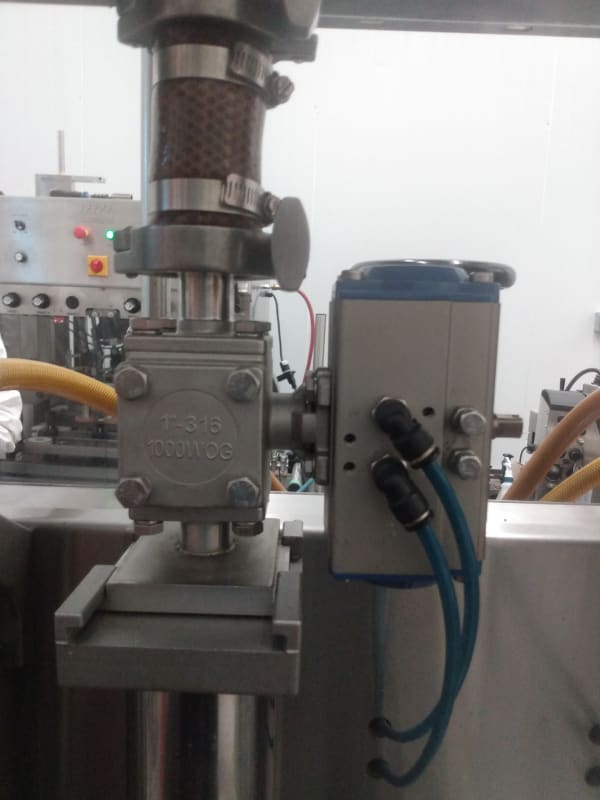Hello experts,
I would like to know the operation principles of the machine in this video.
It is a bottle filler machine with four pistons and an induction motor to move the four pistons at the same time.
In the picture you see a pneumatic actuator and I believe a ball valve; I could not find a brand for the actuator.
The valve is open to the nozzles except when the piston moving down as it shifts to draw product from the top tank.
So the piston moves up for timed period, stops, valve changes, piston comes down, valve opens.
The piston rods are attached to a tubing o the bottom; it has a collar inside the tubing to secure it from the top and is allowed to "float down all the way to the bottom of the tubing. On the bottom of the tubing there are four bolts that thread up to adjust how much the piston rod is allowed to float down.
The main question is why is the rod designed to float, how does that benefit the system?

Thank you.
I would like to know the operation principles of the machine in this video.
It is a bottle filler machine with four pistons and an induction motor to move the four pistons at the same time.
In the picture you see a pneumatic actuator and I believe a ball valve; I could not find a brand for the actuator.
The valve is open to the nozzles except when the piston moving down as it shifts to draw product from the top tank.
So the piston moves up for timed period, stops, valve changes, piston comes down, valve opens.
The piston rods are attached to a tubing o the bottom; it has a collar inside the tubing to secure it from the top and is allowed to "float down all the way to the bottom of the tubing. On the bottom of the tubing there are four bolts that thread up to adjust how much the piston rod is allowed to float down.
The main question is why is the rod designed to float, how does that benefit the system?

Thank you.
